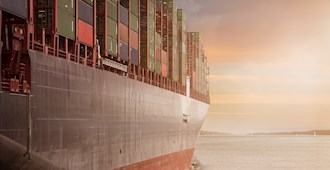Empowering Your Supply Chain: 5 Strategies to Navigate Customs Clearance Disruptions
Date: 24/06/2024
In the complex landscape of today's global market, we understand the challenges businesses face amidst supply chain disruptions. From navigating geopolitical tensions to adapting to regulatory shifts, proactive strategies are essential for effective navigation. At the forefront of this effort is customs clearance, an important process for strategic planning to minimize delays and financial burdens.
In this environment of continuous change, customs clearance is not only about compliance; it is also about optimizing processes to smooth flow and avoid disruptions. Come along as we discover this crucial feature of supply chain management, uncovering essential strategies that will help ensure resilience in today's ever-evolving marketplace.
Evaluating Supply Chain Risks in Advance
Recognizing Weaknesses
While it is beneficial to conduct assessments of the supply chain before disruptions start, it is even more critical to identify the risks. Evaluating areas of vulnerability like single-sourcing or purchasing from unstable regions helps you understand and tackle potential disruptions. After all, anticipation is key to resilience.
Scenario Planning
Once you've identified key vulnerabilities, scenario planning becomes your strategic ally. It's the process of mapping out potential disruptions, equipping you to navigate uncertainty with control.
By simulating various scenarios and developing response plans, you're essentially creating a safety net for your supply chain. This proactive approach acts as a reliable guide, helping you steer through challenges and ensuring your business remains resilient during difficult times.
Diversifying Your Suppliers
Reducing Dependency
Depending solely on one supplier for vital components or materials exposes your supply chain planning process to significant risks during disruptions. By broadening your supplier base, you not only diminish dependency but also establish alternative sources for emergencies, safeguarding your operations. In adopting this approach, you strengthen your key supply chain process to withstand unexpected challenges, providing a sense of security amidst uncertainty.
Partnering with Local & International Trade Partners
By teaming up with both local and international trade partners and suppliers, you can find an array of advantages. These include quicker lead times, lower transportation costs, and a heightened ability to adapt. By cultivating robust partnerships with suppliers spanning diverse regions, you not only strengthen your supply chain's resilience but also guarantee it remains effecient in response to evolving market conditions.
Leveraging Technology for Monitoring and Tracking
Implementing Real-Time Tracking Systems
Frequently referred to as the game-changer, real-time tracking systems in modern supply chain management transform how companies monitor the advancement of goods. Tracking supply chains will not only give you the opportunity to learn more about the evolution of your processes from start to finish but will also enable you to see where you are in the marketplace.
Predictive Analytics
Predictive analytics tools act as navigators for your supply chain, helping to effectively analyse extensive data to uncover patterns and anticipate future events. With this, businesses may proactively implement measures to lessen potential disruptions, fostering smoother operations and nurturing a profound sense of confidence and security in the face of uncertainty.
Enhancing Efficiency in Customs Clearance
Automated Documentation
Have you ever felt the frustration of manual documentation processes becoming a bottleneck in your operations? While necessary, these tasks can take up valuable time and increase the risk of errors, causing delays and headaches in the clearance process. However, there's a solution: automated documentation systems.
By adopting these advanced tools, businesses can transform their customs operations, optimize processes, and reduce errors to ensure a smoother flow of goods across borders. So, bid farewell to paperwork and discover the efficacy of automated solutions for a hassle-free customs clearance experience.
Collaborative Relationships with Customs Authorities
Businesses can facilitate customs clearance processes by cultivating collaborative relationships with customs authorities. By engaging in open dialogue and transparent information sharing, companies can obtain valuable insights into regulatory requirements, ultimately refining clearance procedures for smoother transactions.
Investing in Training and Education
Keeping up with customs regulations and procedures is paramount! Focusing on investment in training programs for your team ensures they possess the expertise and capabilities to seamlessly cover customs clearance and global supply chain disruptions.
Customs clearance necessitates coordination among various departments in areas such as procurement, logistics, and compliance. Promoting collaboration across diverse teams and the exchange of perspectives cultivates a sense of teamwork and unity in customs clearance initiatives.
At World Logistics Partners (WLP), we understand the vital role of mastering customs clearance in strengthening supply chain agility. When we take preventive steps such as assessing risks, broadening our supplier base, integrating technology, simplifying customs procedures, and investing in training, we create an environment where our operations flow effortlessly, ensuring continuity and reliability.
Through innovation and collaboration, WLP builds robust supply chains capable of navigating evolving market challenges while prioritizing the growth and well-being of our team members. Visit our website if you wish to learn more about us and what we do.




